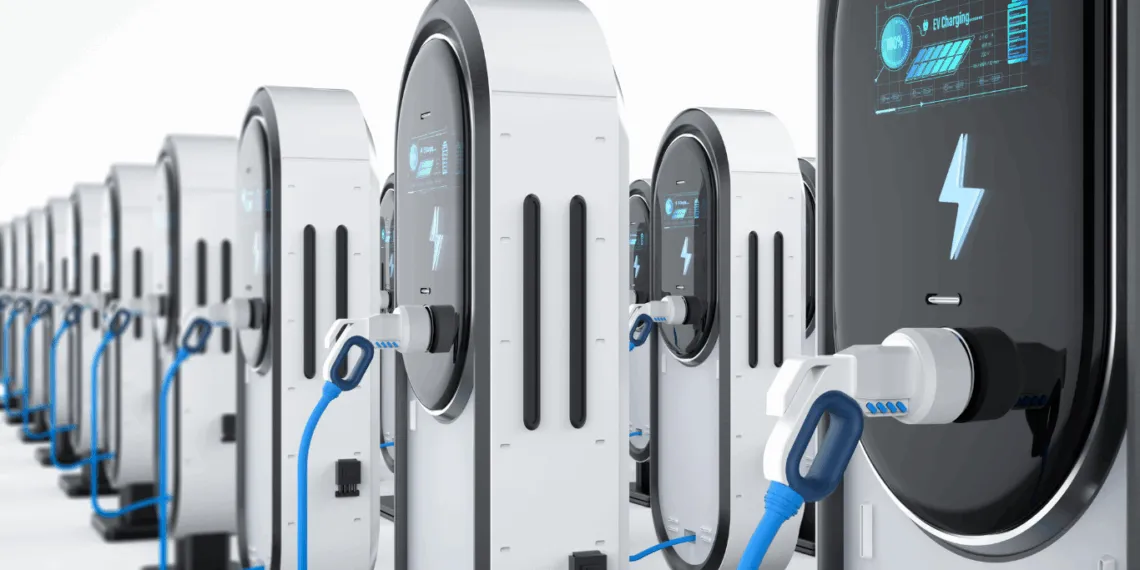Lately, a quiet revolution is humming through the smog-choked capital’s corners and winding hills — unmistakably electric. Once an overlooked side character in the vehicle scene, electric vehicles (EVs) have swiftly moved into the spotlight, recharging not just the way we move, but how we envision progress.
What’s driving this surge: smart policy, public enthusiasm, environmental concerns, or all of the above?
In fiscal year 2019–20, the EV market rose, importing 236 electric passenger vehicles, mostly from China, valued at roughly $5.06 million. Fast forward to 2023–24, and the scene is wildly different, with 11,466 units, worth around $218 million, entering the country. The growth? A staggering 158 per cent in imports.
As if the numbers are not already high; in just the first 11 months of 2024–25, 13,492 EVs rolled in, valued at $237.22 million. From mid-May to mid-June alone, 3,633 units were imported as distributors rushed to beat the possible policy changes due to the federal budget.
Meanwhile, fossil-fuelled vehicles seem to be losing their spark. In 2019–20, there was a total of 10,310 internal combustion engine (ICE) vehicle imports. That number dropped to 3,537 units by 2023–24, with the total value almost halving from $69.47 million to $31.65 million. EVs now make up more than 70 per cent of new passenger vehicle imports—a remarkable transformation in just five years.
If the nation’s EV wave had a face, it would probably be the Chinese automobile, BYD. The company dominates the Nepali EV landscape with models like the Atto 3, Dolphin, and now the incoming Sealion 7. On May 18, 2024, BYD’s authorised distributor, Cimex Inc. Pvt. Ltd., sold 50 vehicles, demonstrating strong consumer demand.
As of 2024/25, China accounted for nearly 74.5 per cent of all EV imports (7,344 units), followed by India (2,411 units)—largely driven by Tata Motors’ Tiago EV and Nexon EV. Other countries like Germany, the U.S., and South Korea contribute marginally.
Public transportation is also electrifying. 3,132 electric public transport vehicles, valued at $71.28 million, were imported in the first 11 months of FY 2024/25—1,846 more units than the previous year. Operators like Sajha Yatayat and Sundar Yatayat are adopting EV buses, albeit slowly.
Making EVs Affordable
EVs are not exactly inexpensive. But until recently, banks made the leap easier by offering loans covering up to 90 per cent of the vehicle’s cost. Lower customs and excise duties also reduced prices. For example, import duties on EVs (25-90 per cent) were significantly lower than those on ICE vehicles (276-329 per cent).
However, things started to shift. The FY 2024/25 budget raised customs duties to 15 per cent (from 10 per cent) on EVs up to 50 kW and imposed a 5 per cent excise duty. The Nepal Rastra Bank added another bump by slashing the loan-to-value (LTV) ratio from 90 per cent to 60 per cent, doubling the required down payment for many buyers. A Tiago EV once needed NPR 550,000; now it demands nearly NPR 1.1 million (~ $8,270) upfront.
This reversal created confusion in the market. On one hand, the government claims to support EVs. However, its monetary and fiscal policies are inconsistent.
Thankfully, the FY 2025–26 budget decided to maintain the current EV tax structures and provided generous concessions for companies building charging infrastructure: just a 1 per cent customs duty on charging equipment and a five-year income tax holiday.
Charging Across the Map
Speaking of charging, it was once the biggest concern surrounding EVs. Now, it’s finally catching up. The Nepal Electricity Authority (NEA) has deployed 62 public charging stations, while private operators have contributed to a national network of over 750 charging points. Many now offer fast charging (up to 120 kW) via standard connectors like CCS2 and GB/T.
Charging costs remain low: NPR 6/kWh during off-peak hours, NPR 9/kWh during the day, and NPR 11/kWh in peak times, making EVs significantly cheaper to operate than their petrol or diesel counterparts.
A nationwide charging master plan is in the works, but critics argue it’s already behind schedule, especially for rural highways and cross-border corridors.
Widespread access to charging infrastructure may encourage the adoption of electric vehicles, thereby reducing fossil fuel consumption and alleviating the capital city’s severe PM2.5 levels. According to the World Bank, this pollution exceeds WHO standards by 20-35 times, causing approximately 26,000 pollution-related deaths annually.
EVs are a tangible step. The nation’s reliance on more than 90 per cent hydropower makes EVs incredibly clean to operate. Unlike countries still reliant on coal, charging an EV here doesn’t simply shift the pollution upstream; it reduces it. EVs help reduce oil imports and foreign currency outflow. In 2024, the country saved an estimated $22 million in fuel imports due to increased EV adoption.
Structural Hurdles
While the transition to EVs is booming in urban areas, rural regions are lagging. Insufficient road infrastructure and long-range public charging limit electrification’s reach.
Additionally, there still is a lack of a clear legal framework for converting older ICE vehicles to electric. Regulatory barriers and multi-tier governance confusion prevent seamless transitions, especially in the public transport sector. Moreover, EV-specific safety and performance standards, creating long-term risks in maintenance, battery disposal, and consumer safety, have yet to be implemented.
Stakeholders at the “Green Mobility for Tourism Prosperity” summit asserted that eco-transport could solidify the country’s position as a green destination. Hence, EV adoption has the potential to help manage the trade deficit by reducing imports of fossil fuels, making use of domestic electricity, and encouraging investment in local energy infrastructure.
The EV story isn’t just about shiny new tech—it’s about economic recalibration, environmental necessity, and public health. It’s also about asking whether policy, finance, and infrastructure can keep pace with consumer momentum.
Sudipa Mahato is a junior editor with Nepal Connect.


